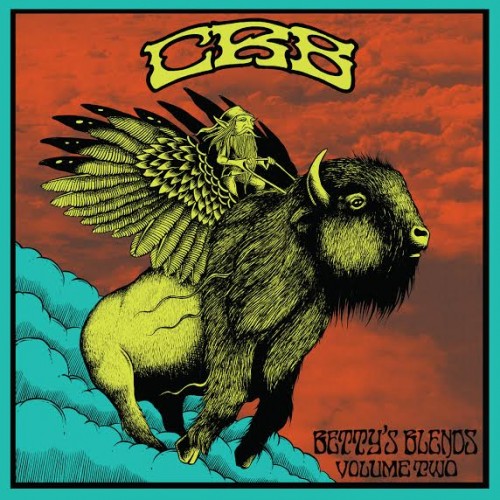By Michael Lello
It sounds like the beginning of a bad joke: A pair of pianists walk into a studio. But that’s essentially the story behind Dose Hermanos’ new album, “Batique.”
These particular hombres, Tom Constanten and Bob Bralove, have been working together as an improvisatory piano tandem for some time, and the new album is a total exercise in winging it – they recorded their parts, simultaneously, in separate studios, tethered together only by headphones.
It might sound like an outrageous concept, but if you recognize their names and their common connection – the Grateful Dead – then it shouldn’t come as too much of a surprise. Constanten joined the Grateful Dead in 1968 and remained with the band only until 1970, but long enough to play on some of their most wildly experimental records: “Anthem Of The Sun,” “Aoxomoxoa” and “Live/Dead.” Bralove, a few decades later in 1987, joined the Dead family to teach them the then-burgeoning MIDI technology and ended up being an onstage collaborator during the group’s exploratory “Drums and Space” concert segments and even co-wrote and co-produced Dead material.
Highway 81 Revisited recently had a conference call with Constanten and Bralove – who worked with Stevie Wonder before his Dead days – about the beautifully textured new album, how Jerry Garcia inadvertently gave birth to the Dose Hermanos concept, and jumping off musical cliffs together.
Why did you take the approach of recording separately and improvising for “Batique”?
Bob Bralove: It was about time. We both love the acoustic instrument. You can do things with your fingers and your touch and exactly how you want to express things that open up a whole dimension of possibilities. We’re both aware of it. This is an instrument that has hundreds of years of development into it, and you can tell when you play it. I think we both kind of looked at each other and said, “It’s about time we did it this way.”
Did either of you initially think it was crazy?
Tom Constanten: We’ve been doing this for a while, almost 20 years. We’ve done live shows with electric instruments, with acoustic instruments. We’ve explored a big world, and we wanted to explore some more.
BB: I think “This is a crazy idea” and “It might not work” is an oxymoron to us. For us, it’s “It’s a crazy idea, let’s try it!” (laughs) It’s how we approach things.
Would you be able to make an album like this if you hadn’t been playing together for so long?
TC: It would’ve been different. A lot of what we do is cumulative over a period of time. The places we go to, the connections we make, and so yes, we could’ve done it right away, but it would’ve been different, it wouldn’t have been this.
BB: It’s a question of jumping off a cliff. If you’ve jumped off a cliff with somebody enough times, there’s certain things you can trust about it in the other person. That’s what we’re doing, we’re just jumping into this wild sense of what music could possibly be and how to make it.
How did you first meet and start working together?
TC: It was the mid ’90s, and what brought us together was when we lost Jerry and we realized it was something we had to do to carry on the energy.
BB: Yes, in fact we had met once when Tom sat in with a band Vince Welnick and I had together called Second Sight in the early ’90s. At Jerry’s funeral, Tom, he was there, and he turned to me and said “You know how to get through this.” And I said “how?” And he said “play.” You play through it. And that’s what made us want to keep that energy going.
How would you say each of you have been influenced by each other?
TC: Myriad ways. Bob is a sorcerer with many hats, and every time I show up, there’s another one. It keeps me on my toes and I like that.
BB: And Tom is doing the same for me. It’s always inspiring. He’s able to do things on the keyboard that are constant surprises. The discipline he has with his hands, and the imagination he has with his head, combine with the willingness to explore it and take it somewhere we’ve never heard before, as opposed to always trying to achieve the same thing over and over again, it’s really inspiring for me.
What are the pros and cons (if there are any cons) of your inescapable Grateful Dead connection when releasing music like this? Are you concerned that there are people out there that would love instrumental piano music like this but won’t hear it because it’s part of the Dead world and they’re not?
TC: Well, we traverse a wide swath of musical styles and genres, which of course the Grateful Dead did also, but we are hopeful of reaching new people, and maybe even bring them into the Grateful Dead circle.
BB: Yes, the responses that we’re getting in terms of people who might not be interested in the Grateful Dead has been very strong. So that’s very exciting for us, that people are digging the record, and the Grateful Dead audience is digging the record, so there’s really not a downside to having that association. I mean we’re talking to you, and that’s a wonderful thing, and that’s a Grateful Dead association, so the more people that get to hear it, the Grateful Dead is a wide-open mind audience, and they have friends they can turn onto the record who might be more interested in contemporary classical or jazz or some kind of improvisation. It’s a wonderful heritage to be in, even if you’re doing some different kind of music.
Bob, before you got involved with the Grateful Dead, how familiar were you with the group?
BB: Well, I had been to a show at the Capital Theater in Port Chester when I was in high school, and that was a time when I was listening to “Workingman’s Dead” and “American Beauty.” I think I was listening at the time “Europe ’72” came out, and that was one show. That was the extent of my experience.
Before I was with the Grateful Dead, I was with Stevie Wonder, and I was with this whole Motown scene, working with everybody, from doing little snippets for movies for Paul McCartney to Quincy Jones; Stevie Works with everybody, Herbie Hancock … That was a wonderful experience, but the relationship that the Grateful Dead had with the audience and the commitment to the magic of the moment kind of blew my mind when I really got it.
What are some of the similarities between working with a guy like Stevie and the Dead?
BB: For me, the lessons that are similar are really about being yourself. You really have to be who you are musically. You just have to be in that place where the joy is happening. I had almost finished my masters degree in composition when I went to a session with Stevie, and he was telling me, “Why don’t you come stay for these overdubs I’m doing?” He did an overdub and joy was pouring in the room, and I felt like that was the first music lesson I ever had. And that kind of joy and wonder and energy and also that commitment to your own vision is absolutely similar to the Grateful Dead.
One of the big differences that I experienced was that Stevie was an individual entity. The band was all supporting Stevie’s vision. The Grateful Dead was a community. The band worked was a band, and it was a lesson in how sharing those responsibilities and lifting the load together, how strong that community would be. And that went right through to the audience and that was a major lesson for me.
Lastly, Bob Weir recently told Rolling Stone “we owe it to the fans, we owe it to the songs, we owe it to ourselves” to do something to commemorate this year’s 50th anniversary of the Dead. What is your understanding or prediction of a reunion of some type?
TC: Inevitably, something is going to come up. I can feel the momentum. I can’t spill any beans just yet, but they are there, I can tell you.
BB: Yeah.




Leave a Reply